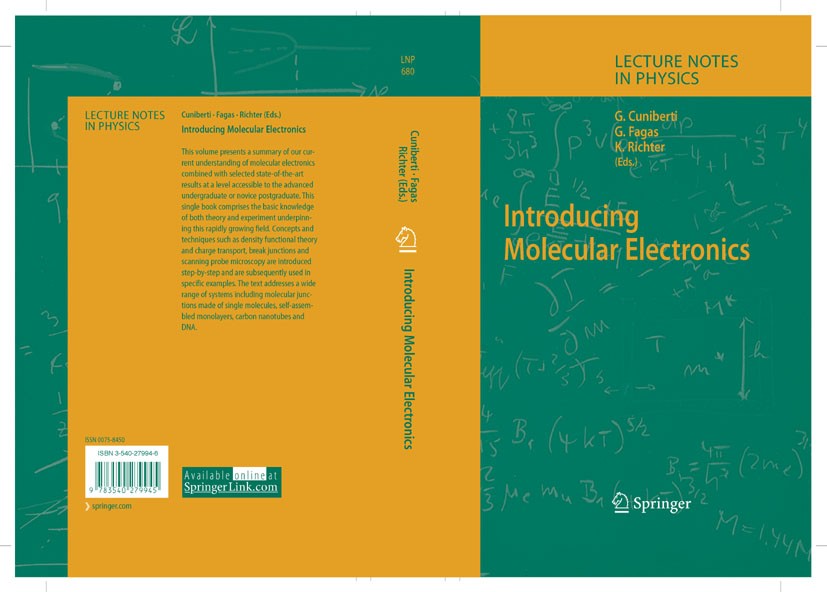| 书目名称 | Introducing Molecular Electronics | | 编辑 | Gianaurelio Cuniberti,Klaus Richter,Giorgos Fagas | | 视频video | http://file.papertrans.cn/474/473331/473331.mp4 | | 概述 | Features basic knowledge of both theory and experiment.Includes supplementary material: | | 丛书名称 | Lecture Notes in Physics | | 图书封面 |  | | 描述 | Klaus von Klitzing Max-Planck-Institut fur ¨ Festk¨ orperforschung, Heisenbergstraße 1, 70569 Stuttgart, Germany Already many Cassandras have prematurely announced the end of the silicon roadmap and yet, conventional semiconductor-based transistors have been continuously shrinking at a pace which has brought us to nowadays cheap and powerful microelectronics. However it is clear that the traditional scaling laws cannot be applied if unwanted tunnel phenomena or ballistic transport dominate the device properties. It is generally expected, that a combination of silicon CMOS devices with molecular structure will dominate the ?eld of nanoelectronics in 20 years. The visionary ideas of atomic- or molecular-scale electronics already date back thirty years but only recently advanced nanotechnology, including e.g. scanning tunneling methods and mechanically controllable break junctions, have enabled to make distinct progress in this direction. On the level of f- damentalresearch,stateofthearttechniquesallowtomanipulate,imageand probechargetransportthroughuni-molecularsystemsinanincreasinglyc- trolled way. Hence, molecular electronics is reaching a stage of trustable and reproducible experi | | 出版日期 | Book 2005 | | 关键词 | Molecular devices; Molecular electronics; Molecular wires; Nanoscale conductors; Nanotube; carbon nanotub | | 版次 | 1 | | doi | https://doi.org/10.1007/b101525 | | isbn_softcover | 978-3-642-06628-3 | | isbn_ebook | 978-3-540-31514-8Series ISSN 0075-8450 Series E-ISSN 1616-6361 | | issn_series | 0075-8450 | | copyright | Springer-Verlag Berlin Heidelberg 2005 |
The information of publication is updating

|
|
 |Archiver|手机版|小黑屋|
派博传思国际
( 京公网安备110108008328)
GMT+8, 2025-11-21 07:45
|Archiver|手机版|小黑屋|
派博传思国际
( 京公网安备110108008328)
GMT+8, 2025-11-21 07:45


